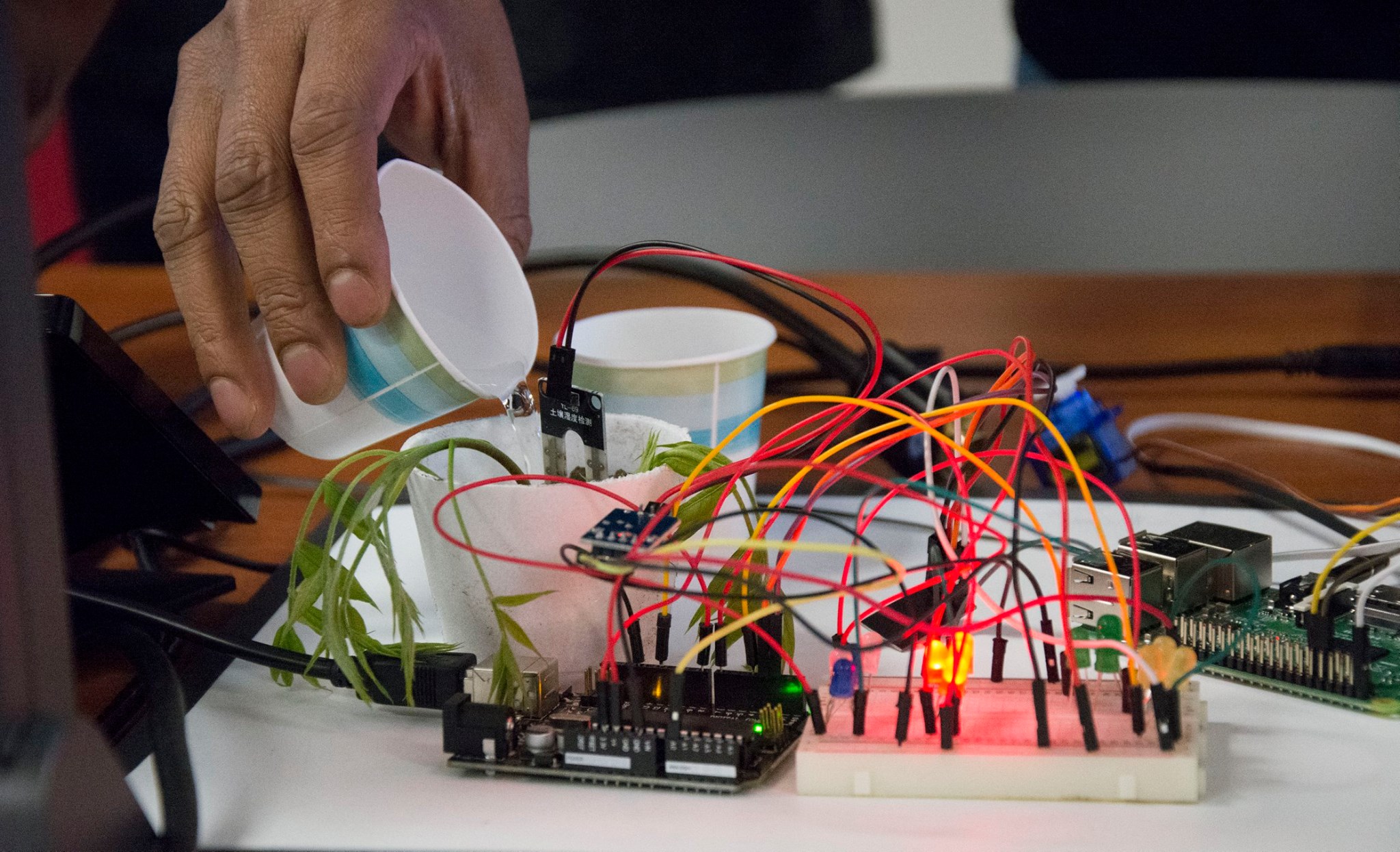Solving problems through syntax: Catherine Fang teaches new mobile apps for IoT course
Lucas Grasha
Jul 17, 2018

Source: Carnegie Mellon Silicon Valley
At some point in living on our own, we’ve all forgotten produce in the fridge—and then rediscovered its spoiled version. Perhaps raspberries over ripened to look less like fruit and more like juice. Understanding this common problem, Carnegie Mellon Silicon Valley students recently built an app—in just four weeks—to help avoid spoiled food. In fact, every student in the new Mobile App for IoT course created apps in a short amount of time to respond to a specific need.
During this past semester, Catherine Fang, instructor of Integrated Innovation at Carnegie Mellon Silicon Valley, taught a seven-week course called “Mobile App for IoT.” In this new course, students learned essentials for programming for the Internet of Things, especially the Web of Things, the application, and user-facing layer, while applying their knowledge to solve real-world challenges through final projects. Students built solutions that targeted a sizable population and demoed the technology at STEMentors, an outreach program at Silicon Valley.
The course’s core components spanned learning about web standards, programming mobile devices for the IoT, and integrating machine learning on cloud platforms. Fang tried to inform and prepare students to deal with information technology as smart sensors and actuators proliferate and integrate into daily life.
Building prototypes in fast iteration allows students to assess feasibility in an early phase of the product
Catherine Fang, Instructor of Integrated Innovation , Carnegie Mellon Silicon Valley
Fang designed the course to coach students in sound business practices and to simulate the industry software development life cycle. “Building prototypes in fast iteration allows students to assess feasibility in an early phase of the product,” Fang commented.
At the end of the course, students successfully demoed their projects to underserved and underrepresented populations in Silicon Valley. Because the students completed prototypes in just four weeks, they inspired those who share the same passion that they can do it too. Fang hopes that CMU-SV will serve as a source of inspiration as they continue to extend the classroom outside of campus.
For the final projects, students had bright ideas: “Food Amphora” used cameras and machine learning to identify spoiled food; “Intrusion Detection” used facial recognition, cameras, and motion sensors to detect against burglary; and “Eat Smart” used image recognition and mobile networks to analyze photos of food to load the ingredients onto a shopping list. The students created a long list of incredible solutions.
Marina Cholakyan, a graduate student in the Integrated Innovation Institute, and her team developed a Smart Irrigation System. The program would appropriately water plants by measuring soil moisture levels. When the level dropped below a certain threshold, a water pump would replenish the soil.
“We wanted a way for communities to save water supplies and money, and make farm maintenance easier,” Cholakyan said.